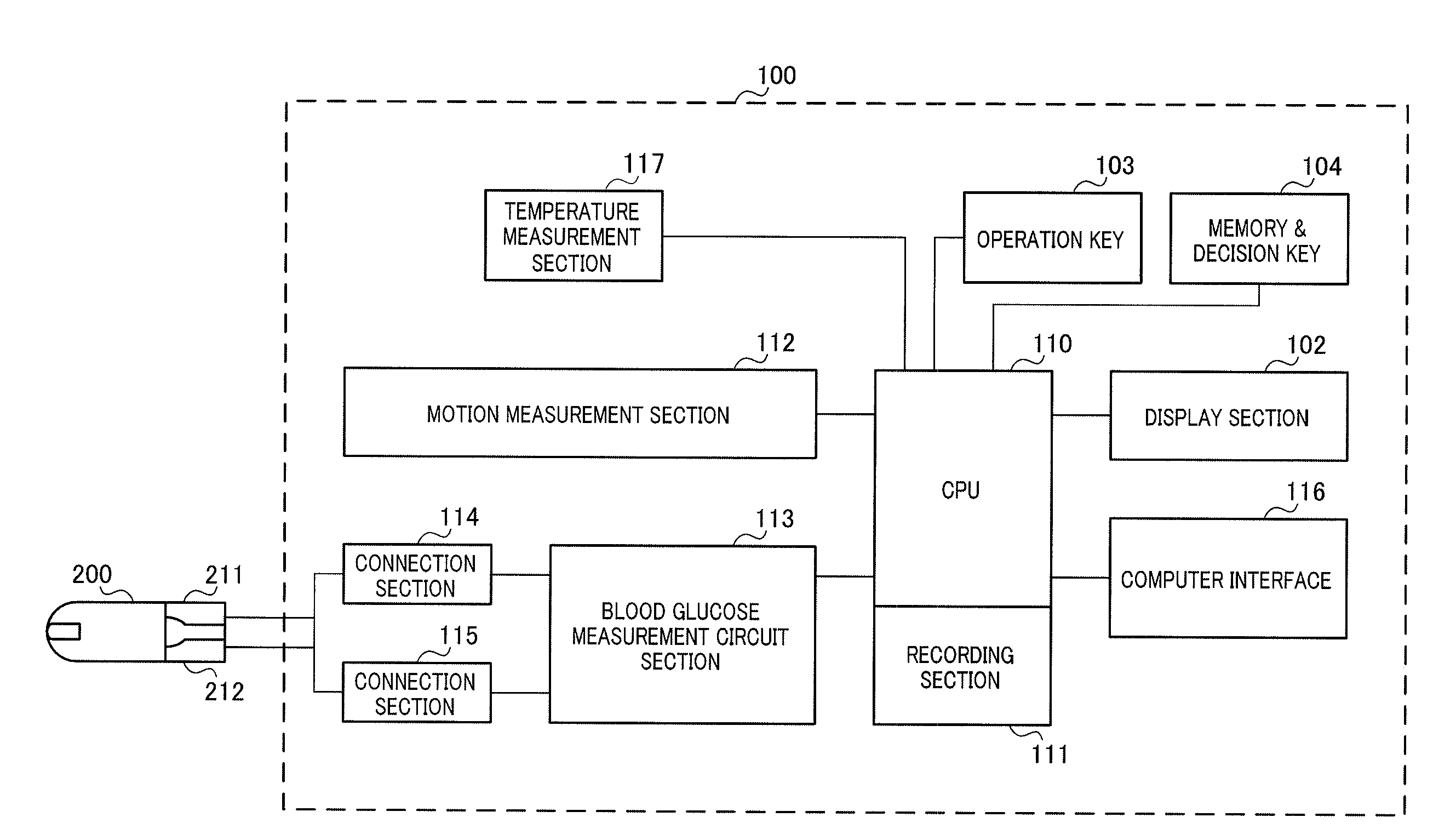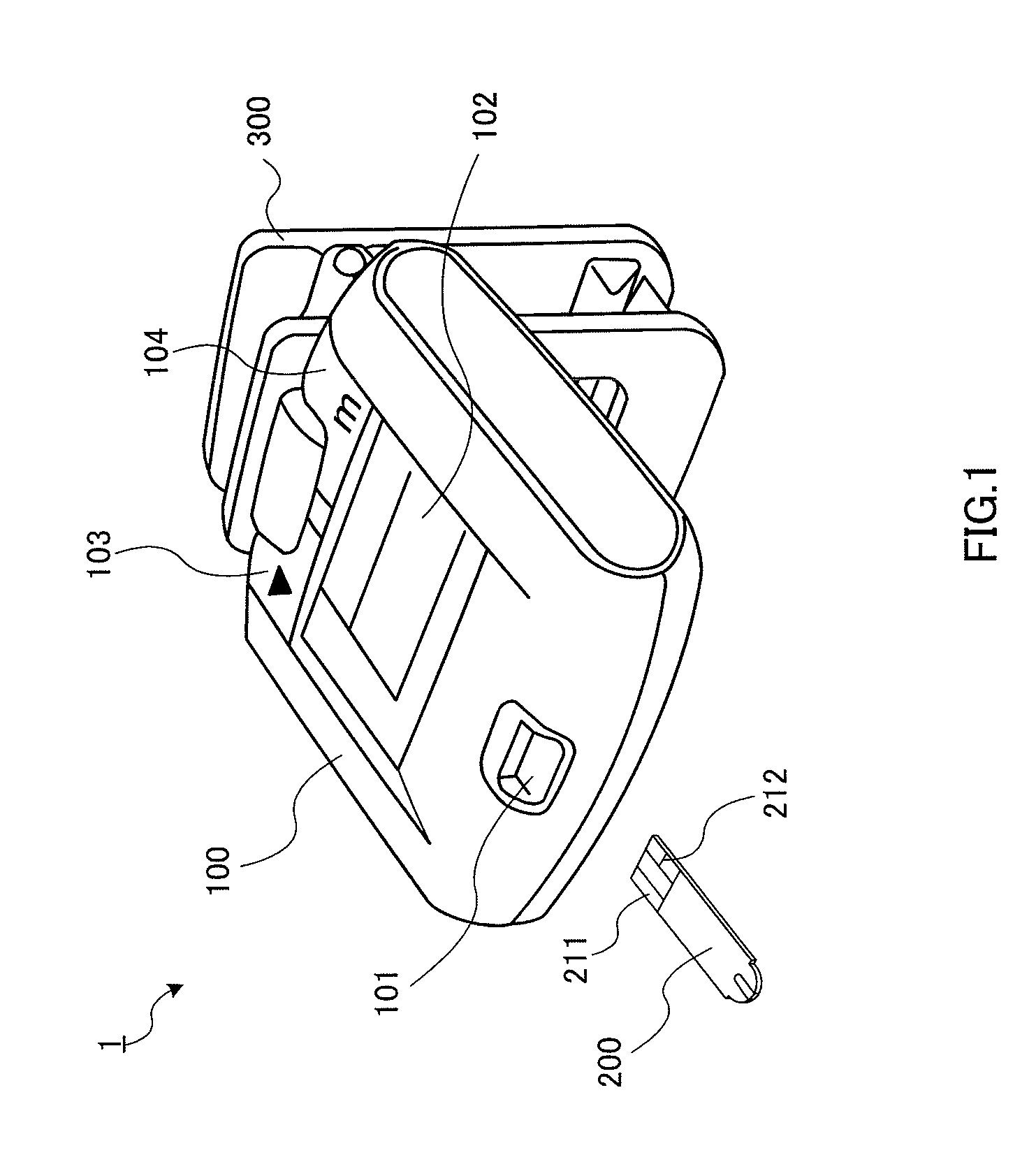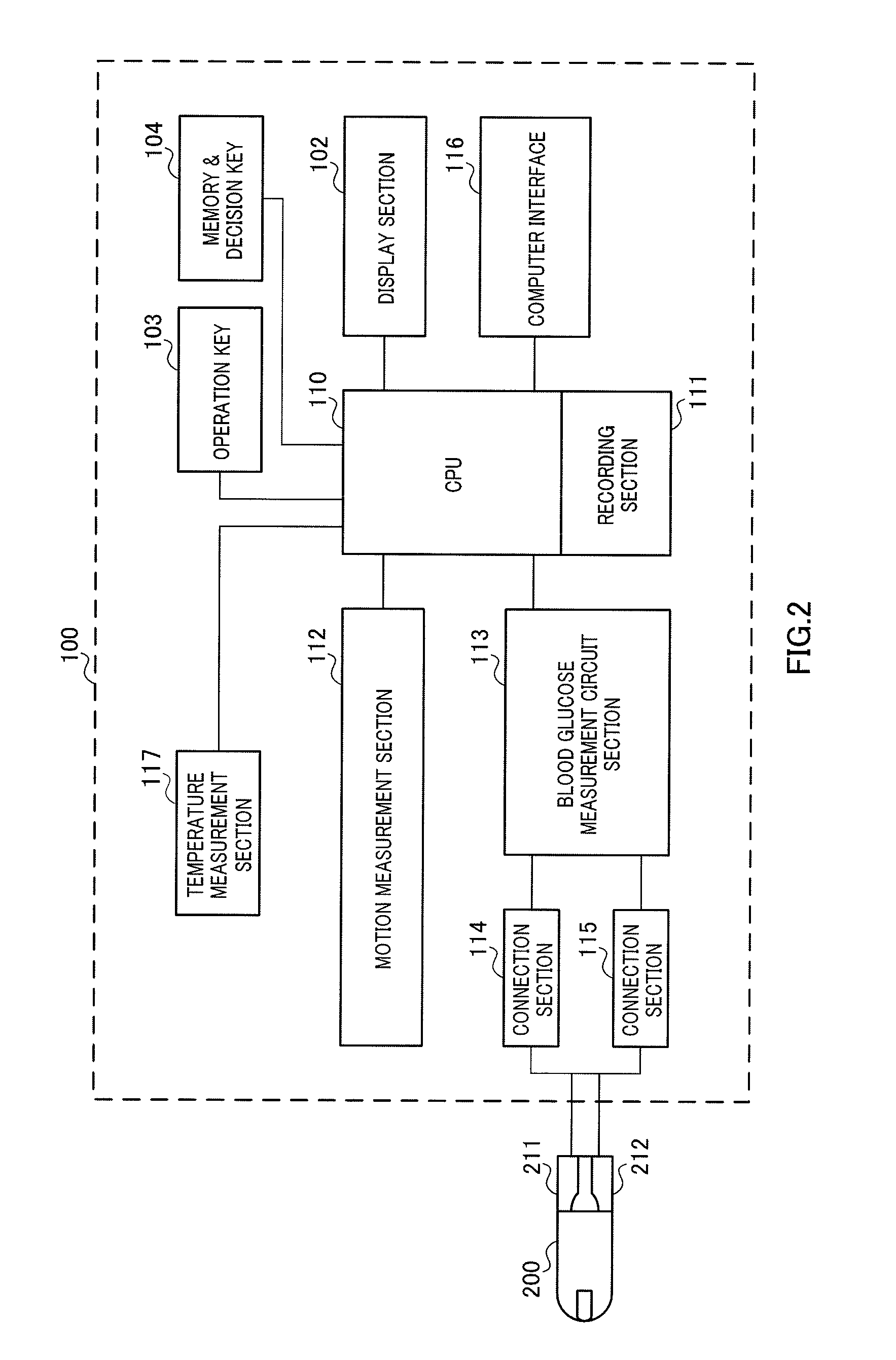Measurement device, insulin infusion device, measurement method, method for controlling insulin infusion device, and program
a technology of measurement device and program, which is applied in the field of measurement device, insulin infusion device, measurement method, and program, can solve the problems of minimal control of blood glucose level, difficult to understand the field to which the present invention relates, and highly unlikely to achieve optimal blood glucose control
- Summary
- Abstract
- Description
- Claims
- Application Information
AI Technical Summary
Benefits of technology
Problems solved by technology
Method used
Image
Examples
embodiment 1
[0490]FIG. 1 is an overview illustration of a blood glucose measuring system according to Embodiment 1 based on the above fundamental concept. This embodiment is an example in which a blood glucose measuring system of the present invention is applied to a self-monitoring system for diabetic patients.
[0491]As illustrated in FIG. 1, blood glucose measuring system 1 includes blood glucose measuring device 100, blood glucose sensor 200, and attachment unit 300.
[0492]Blood glucose measuring device 100 (housing) includes sensor attachment section 101, display section 102 (one example of display means or notifying means), operation key 103, and memory & decision key 104.
[0493]To sensor attachment section 101 is attached blood glucose sensor 200, an attachable / detachable biosensor.
[0494]Display section 102 is composed of a liquid crystal display (LCD) capable of dot-matrix color display, electroluminescence (EL), white LED backlight, and various drivers, and display thereon information in r...
embodiment 2
[0656]In Embodiment 1, improved blood glucose management based on living activity as shown in FIGS. 13 to 15 has been realized by combining the blood glucose levels measured by the biosensor (blood glucose sensor 200) and with living activity levels measured by motion measurement (acceleration sensor) 112. Embodiment 2 will describe how meal events are detected.
[0657]The hardware configuration of a blood glucose measuring system according to Embodiment 2 of the present invention is identical to that illustrated in FIGS. 1 to 3. In this embodiment, CPU 110 serves as meal time setting means as described below, which sets meal time and the number of meals.
[0658]Next will describe how meal events are detected, as well as the importance of detecting meal events.
[0659]Clinically, detection of meal events is critical. For diabetic patients, the relationship between meal and blood glucose level is particularly important for the following reason: The amount of sugar in food directly affects ...
embodiment 3
[0712]In Embodiment 2, meal events have been described as one example of living activities. Embodiment 3 will describe sleep events as one example of living activities.
[0713]The hardware configuration of a blood glucose measuring system according to Embodiment 3 of the present invention is identical to that illustrated in FIGS. 1 to 3.
[0714]Next will describe detection of sleep events, as well as the importance of detecting sleep events.
[0715]Clinically, detection of sleep events is critical. For diabetic patients, the relationship between sleep and blood glucose level is particularly important for the reason as will be described below.
[0716]Development of sleep apnea syndrome, a sympthon often seen in diabetic patients, results in significant elevation of blood glucose level; therefore, it is critical for medical practitioners to obtain a sleep history that addresses how long the patient sleeps, how well he / she sleeps, etc., for proper blood glucose management. However, as monitori...
PUM
 Login to View More
Login to View More Abstract
Description
Claims
Application Information
 Login to View More
Login to View More - R&D
- Intellectual Property
- Life Sciences
- Materials
- Tech Scout
- Unparalleled Data Quality
- Higher Quality Content
- 60% Fewer Hallucinations
Browse by: Latest US Patents, China's latest patents, Technical Efficacy Thesaurus, Application Domain, Technology Topic, Popular Technical Reports.
© 2025 PatSnap. All rights reserved.Legal|Privacy policy|Modern Slavery Act Transparency Statement|Sitemap|About US| Contact US: help@patsnap.com



